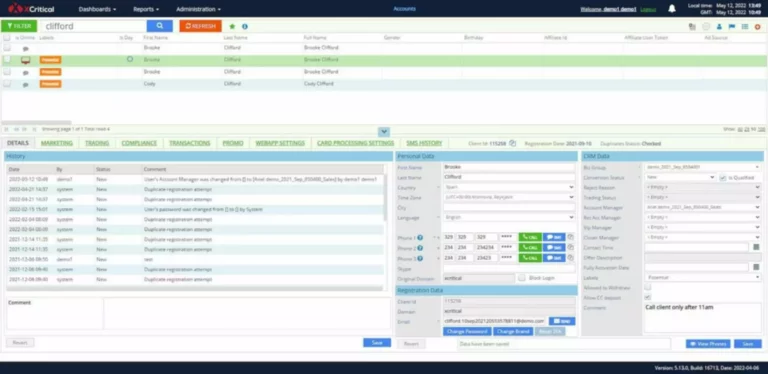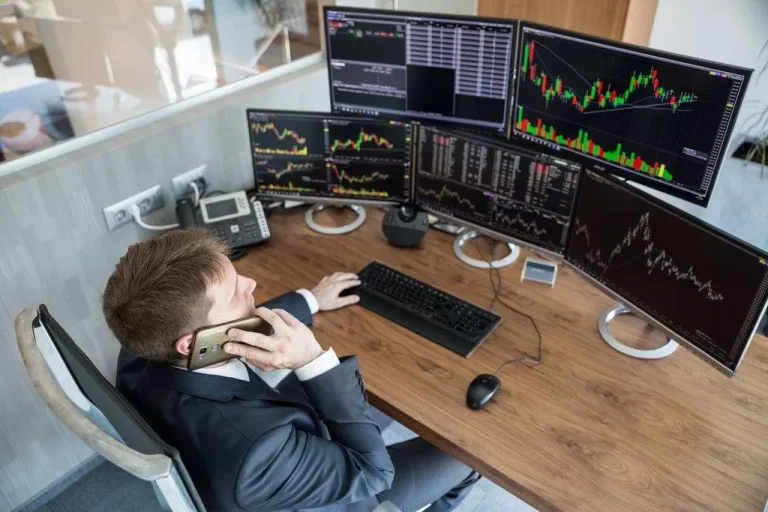Content
Buy-side firms what is buy side liquidity do not usually pay for or buy the sell-side research outright but are often indirectly responsible for a sell-side analyst’s compensation. Usually, the buy-side firm pays soft dollars to the sell-side firm, which is a roundabout way of paying for the research. Soft dollars can be thought of as extra money paid when trades are made through the sell-side firms. This article will go through the responsibilities, methods, and roles of buy-side vs. sell-side analysts.
How does institutional trading influence market mechanics?
It can improve market efficiency by https://www.xcritical.com/ ensuring that assets can be bought or sold quickly and efficiently. This activity can also reduce the bid-ask spread, which is the difference between the price at which buyers are willing to buy and the price at which sellers are willing to sell. Liquidity sweep in market are major area where market seeks liquidity before making a significant reversal. The buys and sell order are placed at areas above and below key levels like equal highs and equal lows, or previous swing points. Liquidity sweep in financial markets occurs when large market participants, especially institutions and market makers aggressively trade on one side of the order book. The aggressive action of market participants sweeps the available orders from the market and drive the price up or down.
Buy-Side vs. Sell-Side In The Financial Industry
Losses can exceed initial investments, so it’s essential to trade within your risk tolerance and use liquidity sweeps wisely. For example, Optiver works with EMSs to stream its bilateral liquidity direct to the buy side. In cash equities, where institutions are concerned about information leakage, it presents its liquidity though indications-of -interest (IOIs). “For us, it’s crucial that these IOIs are updated, that they are actionable and live,” said Schaijk.

Market liquidity: Liquidity Unveiled: How Sell Side Shapes Market Dynamics
- They also provide market information and analysis to help investors make informed decisions.
- Identifying these Forex entry points can give traders an edge, allowing them to align with the upward movement anticipated by the collective market sentiment and the strategies of institutional traders.
- Institutional trading entities exploit the accumulations of these orders strategically to direct the marketplace, making an advanced grasp of market mechanics an indispensable asset for the modern trader.
- It is also possible that market may sweep the liquidity before continuing its trend.
- Robust models and financial estimates are less important to sell-side analysts than their buy-side colleagues.
Buy side liquidity forex refers to the presence of buy orders, particularly above market price ranges or highs, that are awaiting execution. This includes orders like sell stop losses and buy stop limit orders, which play a significant role in the dynamics of institutional trading and overall market mechanics. These accumulations of orders are prime targets for buy side liquidity providers that seek to manipulate market movements to their advantage.

Liquidity Sweep in Trading – SMC and ICT trading Concept
This results in a sudden surge or decline in price, depending on the direction of the breakout. ICT traders focus on finding key levels where market participants are likely to place their stop orders in the futures market. Monitoring liquidity levels closely will enable an outline of the market structure to be laid out, including shifts in sentiment and potential turning points for trade selection. For a trader, it’s still important to monitor changes in liquidity and market structures through time. Groups inclined to one side will consolidate in the range, all the while narrowing on which sides are building conviction, while breakouts will reveal which bias took control.
It represents a level on the chart where long-biased traders will place their stops. When trading reversals, traders should look for price actions that confirm a potential reversal around buy side or sell side liquidity levels. These confirmations can come as engulfing candles, pin bars, or other key market patterns. Liquidity provision is a crucial aspect of the financial markets, but it also poses risks to market participants.
By using buy-side liquidity to aim for market highs, they can have an advantage in understanding financial markets. Easy transactions are important when a lot of money is available, and interest rates are low. When traders initiate buy orders, they often seek to safeguard their positions by placing corresponding sell orders to mitigate potential losses. Liquidity pools, being concentrations of resting orders, have the potential to cause rapid shifts in market momentum when targeted by significant market players.
The major news can trigger sharp moves as the market resumes an established trend or if the range eventually breaks out of indecision. In quiet periods with no big news or events, the ranges widen in a free test of wills on both sides. Measuring the broader macroeconomic variables and changes in policy will keep expectations for the potential for stability or volatility on the ground. Stops respecting untested adjacent zones balance rewarding trends with minimizing the drawdowns if reversed.
These individuals perform research and make recommendations to the money managers of the fund that employs them. Buy-side analysts work for institutions that invest money on behalf of their clients, such as mutual funds, pension funds, hedge funds, and insurance companies. These analysts conduct in-depth research on securities, sectors, and markets to help their employers make better investment decisions. Traders who understand liquidity in will be able to find areas where market makers and smart money are trying to trigger stop loss orders or hunt for liquidity.

While this has led to increased competition and reduced trading costs, it has also made it more challenging to maintain market liquidity. In the future, market participants and regulators will need to work together to ensure that the market structure supports the provision of liquidity. Market depth can also impact market volatility by influencing the ease with which market participants can buy or sell securities. If there is low market depth, a large order can quickly move the market price, leading to increased volatility.
The main differences come down to the role each side plays for their client and the personality types that do well on each side. The ICT trading methodology consists of some key concepts that every trader must know in order to take advantage of trading in this style. In the sections below, we’ll discuss the key takeaways as well as show how to utilize some of these concepts within the TrendSpider platform. Any options trading strategy requires thorough knowledge of underlying market dynamics, options pricing models, and principles of risk management.
Sell-side liquidity provision refers to the act of financial institutions and market makers providing liquidity to the market by offering securities for sale. This type of liquidity provision is crucial to the functioning of financial markets since it enables market participants to buy and sell securities with relative ease. Understanding how sell-side liquidity provision works is important for investors and traders who want to make informed decisions about their trades. Market liquidity is a vital aspect of financial markets that traders and investors use to assess the ease with which they can buy or sell an asset without affecting its market price.
BlackRock is the largest investment manager in the world, with $8.7 trillion under management. Because BlackRock’s business model consists largely of investing on behalf of its clients, it is considered a buy-side firm. A buy-side analyst is much more concerned about being right than a sell-side analyst is.
